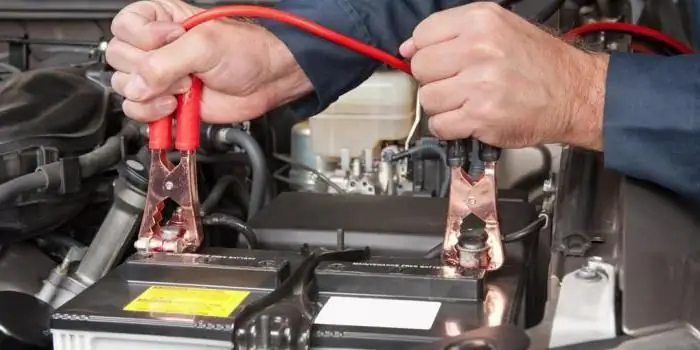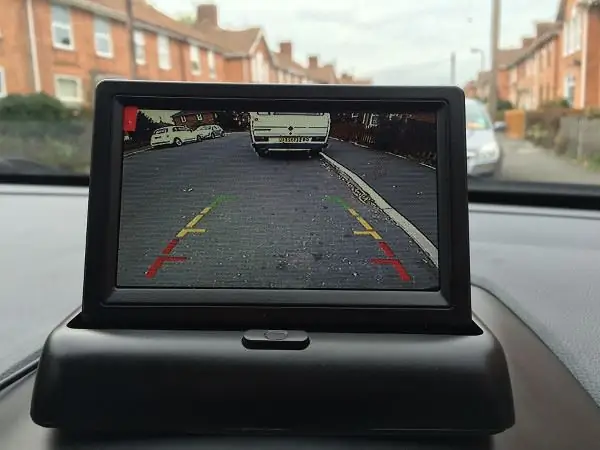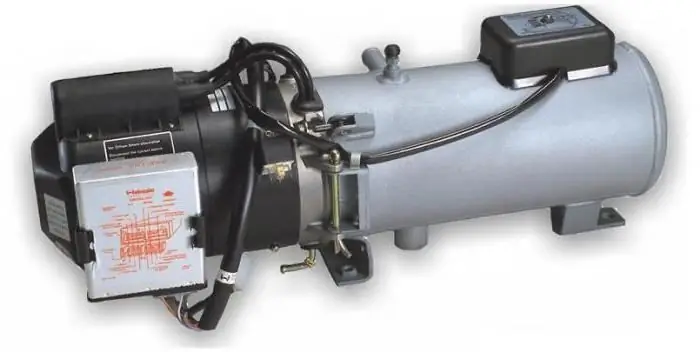2026 Author: Erin Ralphs | [email protected]. Last modified: 2025-01-22 21:14:16
In the winter period, the following problem is relevant: during operation, the engine temperature arrow does not rise. It is worth paying attention to this when operating the car and not delaying the solution of the problem, since a malfunction in the engine cooling system entails a lot of ensuing problems, up to its failure. This problem is especially relevant when the Starline alarm is automatically started. Starting the engine by temperature is one of the functions of the security system. This mode implies automatic start of the engine upon reaching a certain temperature of the coolant. The article discusses step-by-step identification and possible troubleshooting options associated with engine warm-up.

Expansion tank
So, if you find that the engine temperature arrow does not rise during prolonged operation, then the first thing you should pay attention to is the presence of coolant in the expansion tank.

If there is no liquid there, then it must be filled up to the middle mark and only then deal with the localization of the leak. The coolant level should be constantly monitored, especially during the cold season, when there are large temperature differences between a working and a cold engine. Also in winter, you must always monitor its level in the tank. The first sign of an insufficient level is the long warm-up of the car interior in winter and a sharp flow of heat from the stove air ducts when you press the gas pedal. The liquid should be topped up with exactly the brand that you have already filled. Otherwise, there may be problems with sedimentation, which can clog the radiator.
Coolant hoses
If there is not enough coolant in the expansion tank, look for a leak. Usually they occur at joints under clamps or at bends. Hoses are made of rubber and with frequent sharp fluctuations in temperature, it tends to harden and lose its elastic properties. Typically, rubber tans, swells and fails at the engine nozzles, since these are the places where the temperature changes the fastest.
This leads to the fact that during vibration from a running engine, cracks appear through which the coolant escapes and the system begins to take in air. With an air-filled cooling system, the coolant temperature sensor gives incorrect information and the engine temperature needle does not rise or rises, but not much.
Radiator

If no problems were found during the inspection of the hoses and everything is dry, go ahead - the radiator. Radiators often have defects caused by engine overheating. There are such situations more often in the summer, but the consequences appear in the winter. In the heat, in a traffic jam, the engine starts to warm up and does not have time to be cooled by the flow of incoming air (it is not there), the temperature rises and the expansion tank may not have time to relieve excess pressure in the system through the plug, respectively, a microcrack (and not one) appears in the radiator, which is not visible, but coolant can escape through it.
Moreover, the property of the liquid is such that it strongly changes density with temperature changes and starts to flow through small holes only in a cold state, that is, in summer this problem may not manifest itself in any way. A problem with a faulty radiator can be diagnosed by the presence of ice under the front bumper, and localized and made a decision only on a lift or pit. Now a special additive is introduced into the coolant, which glows in ultraviolet light, and the place of its leakage can be easily and quickly detected due to this effect.
Thermostat

The main task of the thermostat is to direct the coolant through two cooling circuits, depending on its temperature. When the engine is cold, the thermostat is closed, but when it warms up, it opens, letting coolant flow through a large circuit.
If the thermostat is stuck open, the coolant is verywarms up slowly and the engine temperature gauge shows insufficient heating. It can jam as a result of a foreign object getting under the valve. It can be a piece of scale, sealant, scale. Also, the cause of its failure may be banal wear and tear. In any case, this part must be replaced.
Engine temperature sensor

Another important aspect. This sensor often fails and, as a result, the engine temperature arrow does not rise. This can happen during strong shaking, after an accident or off-road driving without preparation. As a result, the wire leading to the temperature sensor may be damaged and the engine temperature indicator will give incorrect information.
To understand this is quite simple, the arrow of the temperature gauge will not bow out when the engine is fully warmed up. It is quite easy to change. It is enough to unscrew the old one, put the new one in and connect the wire to it. The failure of the temperature sensor, if careless, can lead to serious engine damage. It can simply overheat, as a result of which deformation of the cylinder head will easily occur. This is an expensive and lengthy repair.
Conclusion
Starting and warming up the engine in winter should be accompanied by increased attention of the owner of the car. It is in winter that the most unpleasant malfunctions emerge that cannot be noticed in summer. The engine must be warmed up to operating temperature and only then start moving. Engine oilshould warm up to the initial operating temperature, as well as the coolant. So you get rid of premature wear of the cylinder-piston group at least. As a maximum, the car will last longer without major repairs and will not let you down on the road.
With the repair of any system or part of the car, you should not delay and it is better to immediately contact the service, where the collective mind of workers will calculate, detect a malfunction and suggest ways to fix it. On your own, without good knowledge, an equipped garage and experience, it is not recommended to start repairs on your knee.
Recommended:
Gazelle does not start: reasons

One day the Gazelle stopped starting? The reason lies in engine malfunctions. The problem can be both mechanical and electrical. To fix the problem, you will have to diagnose a number of parts
Diesel does not start well "cold": reasons. Maintenance and repair of diesel vehicles

Sooner or later, every car owner is faced with the problem of difficult engine start. And this happens both on gasoline and diesel engines. The latter especially often refuse to start in winter. And all because of the properties of diesel fuel. After all, unlike gasoline, there are no spark plugs that would set fire to the mixture. The fuel is ignited by compression force. Plus, diesel thickens at low temperatures
The rear view camera does not work: reasons, how to identify a breakdown

If the rear view camera in the car does not work, there is no serious reason for despair. The situation is fixable. The main thing is to find out the reasons and deal with the problem in time. Let's analyze the most frequent breakdowns and the possibility of their correction using the example of "Hyundai IX 35"
"Opel Astra" does not start, the starter does not turn. Causes of the malfunction and troubleshooting

The fashionable, stylish car of the German car industry fell in love with consumers. Problems happen with any technique, and you just have to be ready for it. One of the problems often discussed on the Opel Astra forums is that it does not start, the starter does not turn
Webasto does not start: reasons. Fault codes for Webasto autonomy

"Webasto" has become almost indispensable thing in the modern automotive world. All those lucky people who have this preheater can avoid a lot of serious problems in winter. But sometimes they do happen. The driver tries to turn on the system and sees that Webasto does not start. The reasons for this behavior can be very different, and few people read the instructions for this installation

